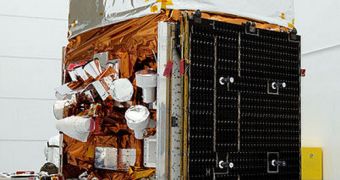According to the results of a recent scientific investigation conducted using the NASA Fermi Gamma-ray Space Telescope, it would appear that powerful thunderstorms taking place in Earth's atmosphere can trigger the formation of antimatter beams above the clouds.
This type of phenomenon has never been seen before, experts say, and so the Fermi readings came as a surprise to everyone. The leading theory at this point is that terrestrial gamma-ray flashes (TGF) are responsible for such events.
These phenomena occur inside thunderstorms, most notable when lightnings strike. Brief emissions of gamma-rays occur, most often in bursts, and it would now appear that these events can trigger the formation of antimatter in the atmosphere.
According to the latest statistics, it would appear that more than 500 TGF occur every single day, above different regions across the planet. Scientists know that most of these events go undetected.
“These signals are the first direct evidence that thunderstorms make antimatter particle beams,” explains Fermi Gamma-ray Burst Monitor (GBM) team member Michael Briggs.
The group is based at the University of Alabama in Huntsville (UAH). Briggs presented the discoveries made with Fermi at the American Astronomical Society meeting in Seattle on Monday.
NASA's gamma-ray observatory is uniquely qualified to keep track of the most energetic form of light in the Universe. The reason why Fermi can see antimatter is because it can track the gamma-rays that are produced when matter and antimatter particles meet, annihilate each other, and disappear.
The process releases copious amounts of radiation, which the telescope's sensitive detectors can readily pick up. In the new study, the GBM team explains, gamma rays have been found at energy levels exceeding 511,000 electron volts.
These levels indicate that electrons in lightnings met positrons, their antimatter counterparts, and got annihilated as a result.
“In orbit for less than three years, the Fermi mission has proven to be an amazing tool to probe the Universe. Now we learn that it can discover mysteries much, much closer to home,” Ilana Harrus says.
The expert holds an appointment as a Fermi program scientist, at the NASA Headquarters in Washington, DC. The telescope has been monitoring Earth's atmosphere since 2008, having already discovered more than 130 TGF.
“Even though Fermi couldn't see the storm, the spacecraft nevertheless was magnetically connected to it,” says expert Joseph Dwyer of the new observations.
“The TGF produced high-speed electrons and positrons, which then rode up Earth's magnetic field to strike the spacecraft,” adds the expert, who is based at the Florida Institute of Technology, in Melbourne.

 14 DAY TRIAL //
14 DAY TRIAL //